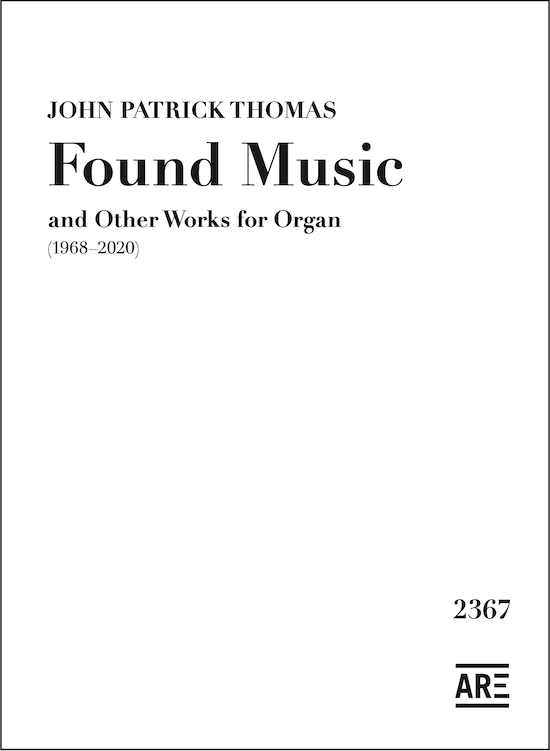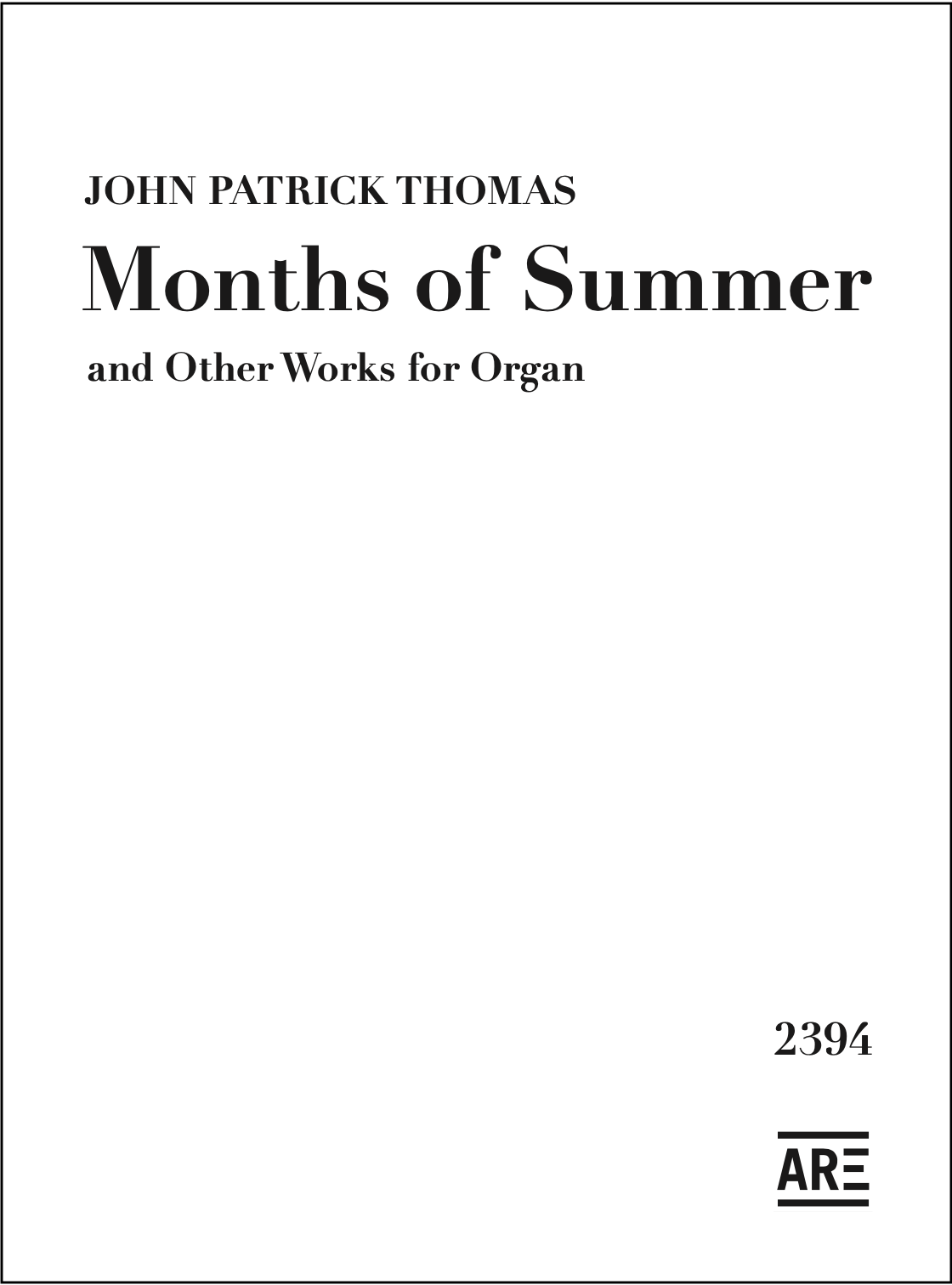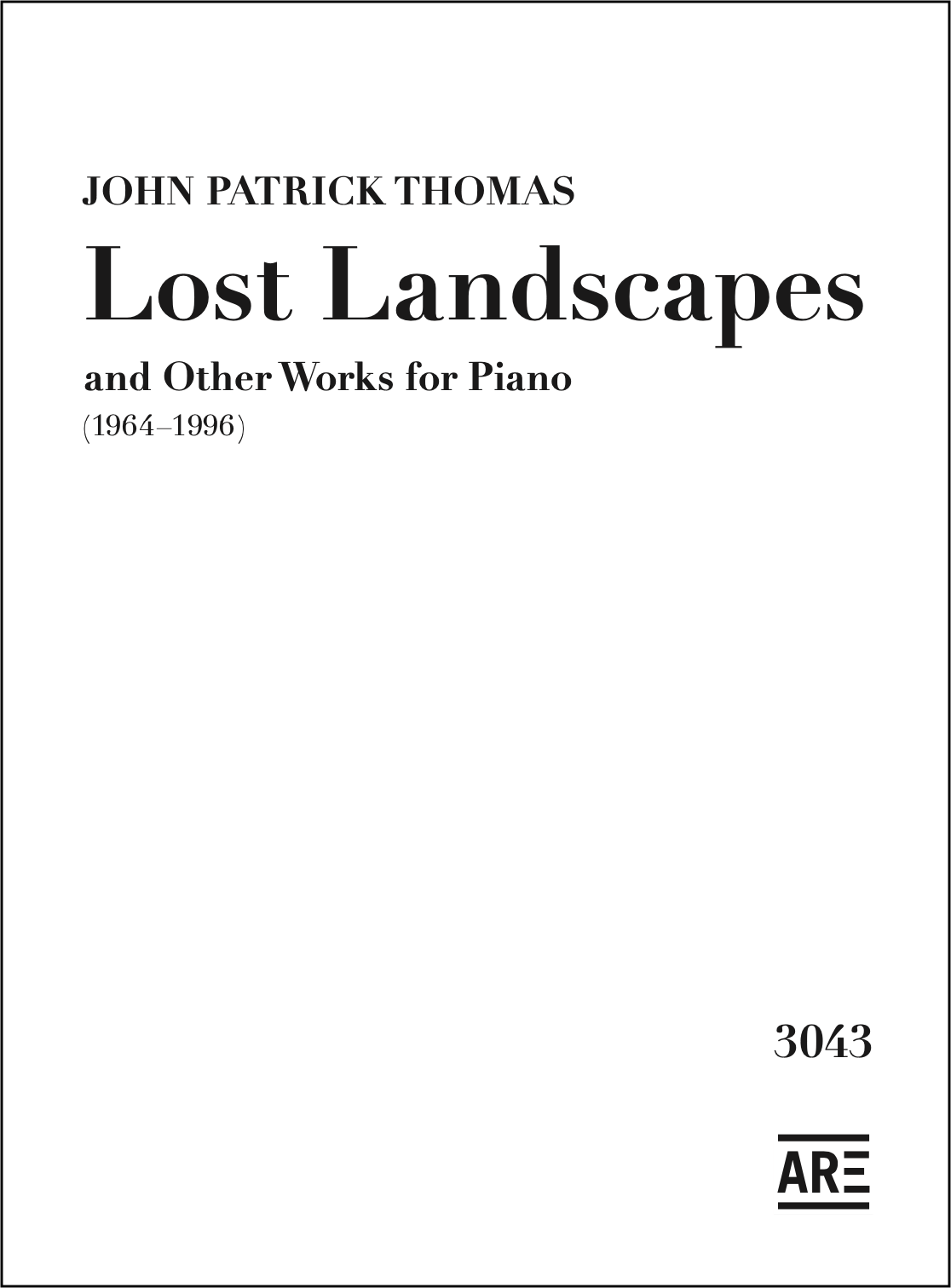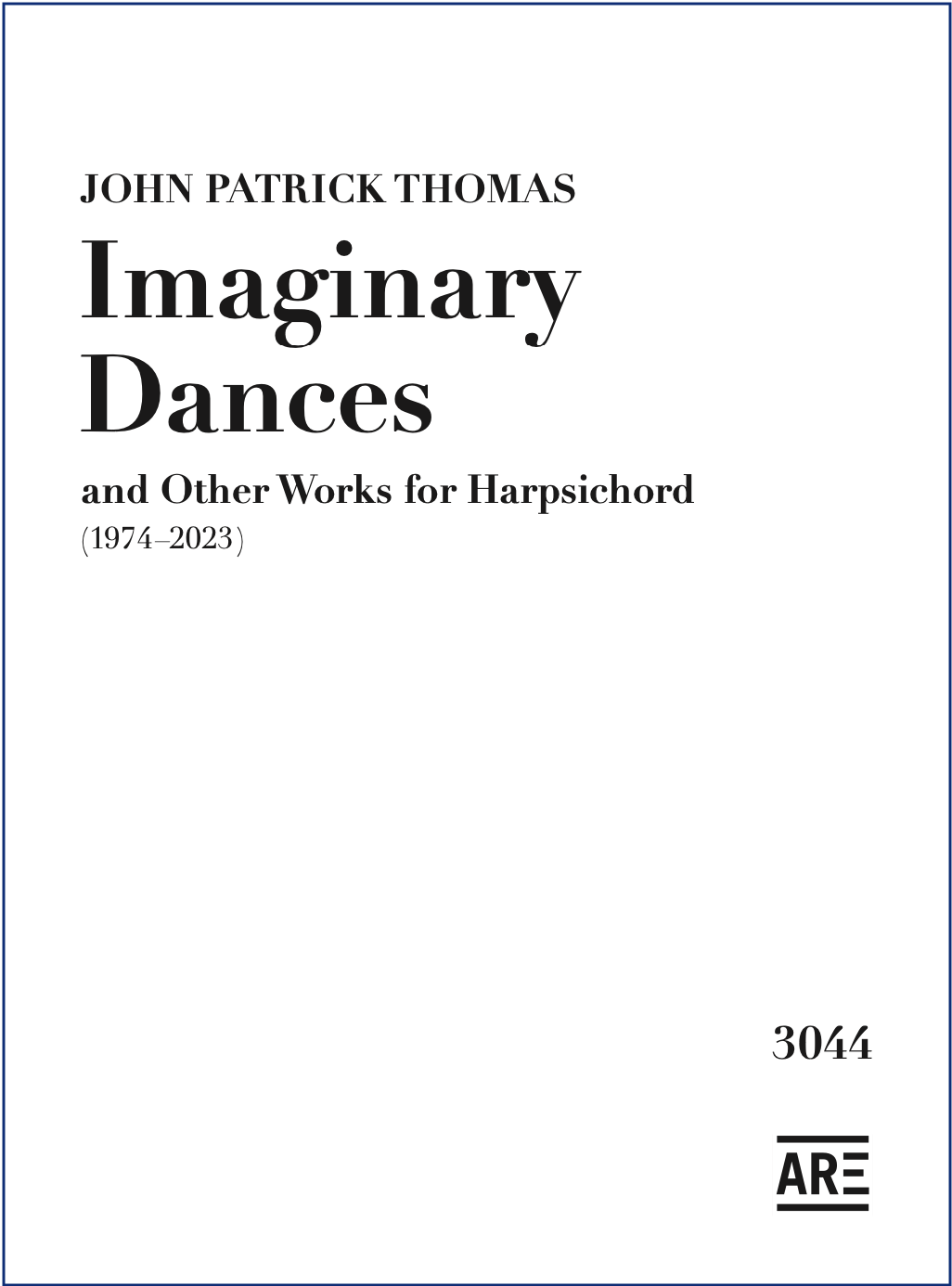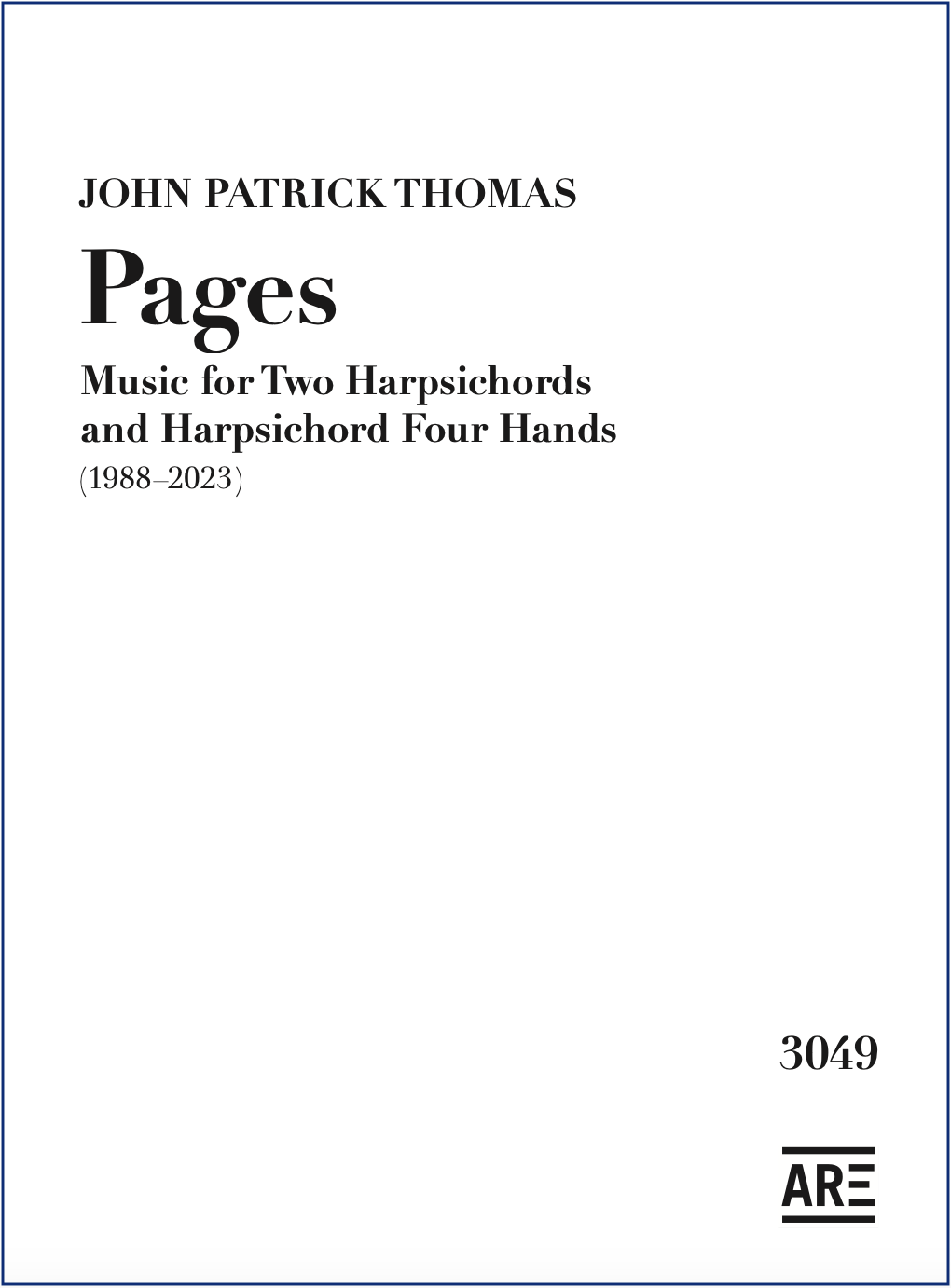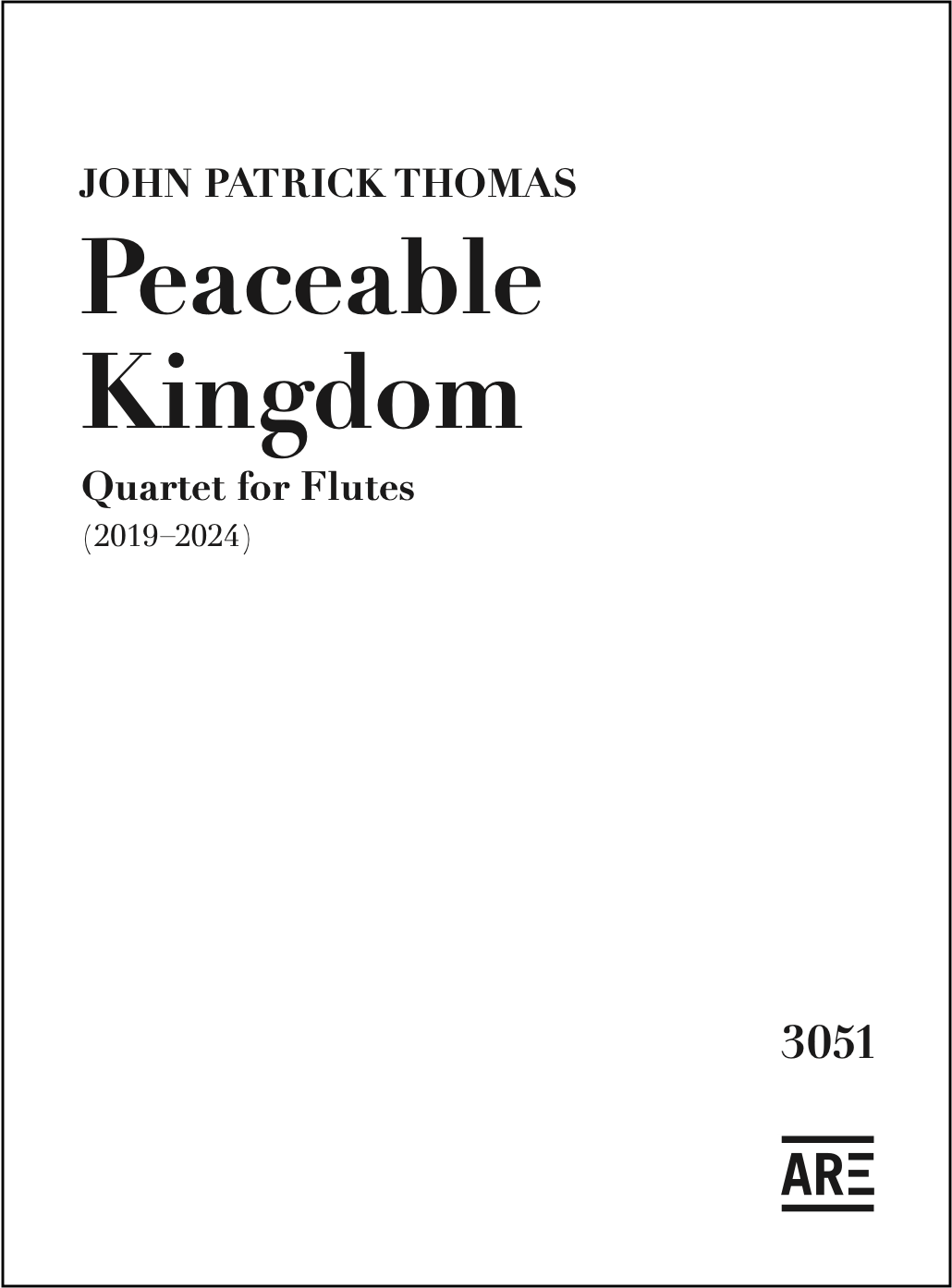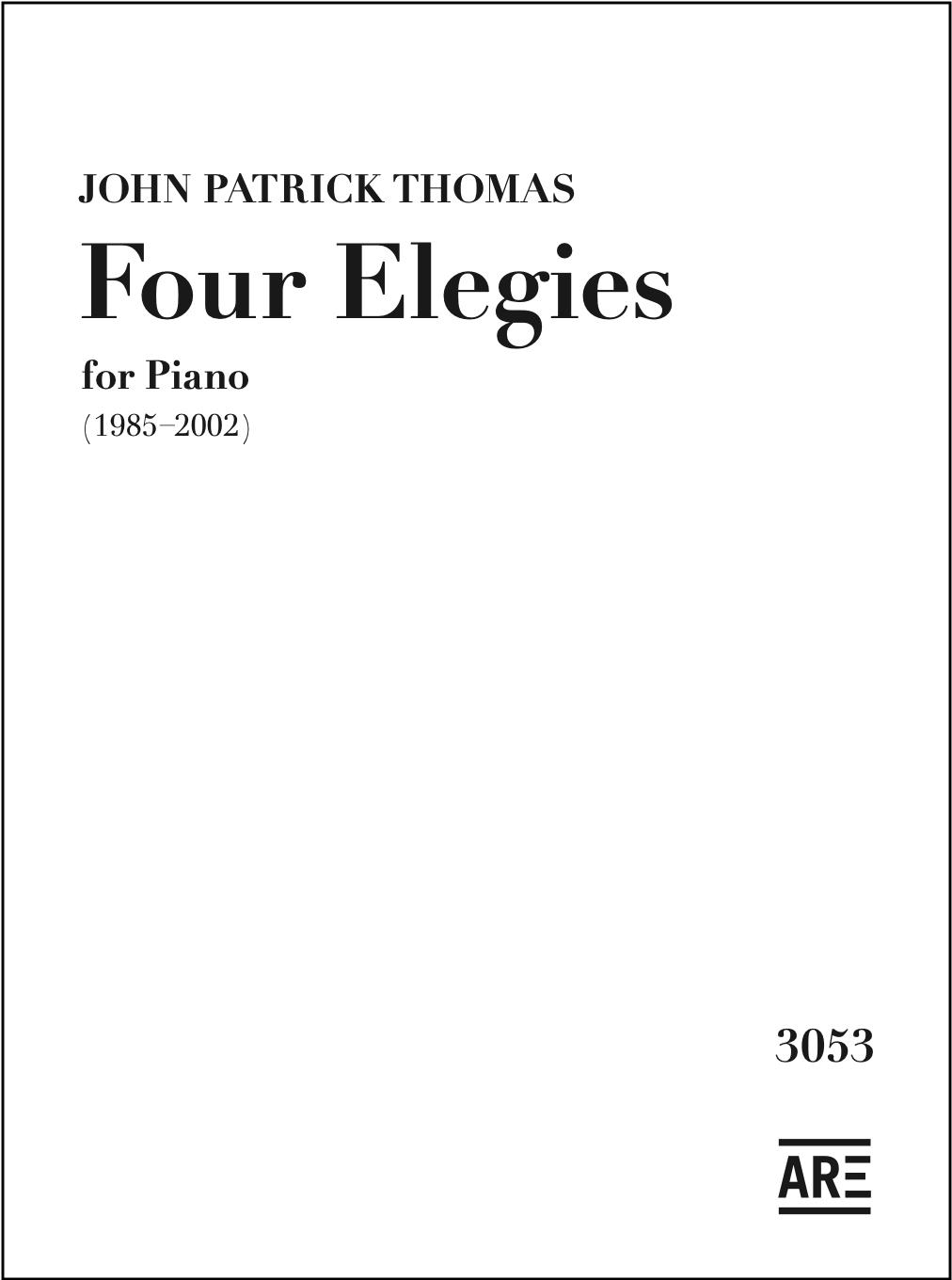Scores
Works for Organ
- Found Music
- Black Paintings
- Peniel
- Beth-El 1
- Beth-El 2
- Beth-El 3
- Machpela
- Elegy No. 4
Vorgesänge
- The biblical texts
- Vorgesang zu Peniel
- Vorgesang zu Beth-El 1
- Vorgesang zu Beth-El 2
- Vorgesang zu Beth-El 3
- Vorgesang zu Machpela
Even before I was born I heard organ music, for my mother sang in the coir at the First Methodist Church in Denver, Colorado. As a result, I developed a passion for the blur of harmonies and instrumental colors created by the echoing acoustics in churches.
It is thanks to Constanze Kowalski's interest in my music that the present volume includes as much music as it does.
Works for Organ
- Months of Summer 1
- Months of Summer 2
- Months of Summer 3
- Months of Summer 4
- Months of Summer 5
- For Pi-hsien Chen 1
- For Pi-hsien Chen 2
- For Pi-hsien Chen 3
- Lost Landscapes 1a
- Lost Landscapes 1b
- Lost Landscapes 2
- Lost Landscapes 3
- Lost Landscapes 4
- Dream Music 1
- Dream Music 2
- How it goes on
Months of Summer is a set of five pieces that dates from 1995. In the years after I moved to Europe in 1971, I often spent summer vacations at my mother’s home in Harvey, North Dakota. The seasonal heat, the rural landscapes, the county fairs, and the broad expanses of sky fascinated me. Recently, I realized that this music forms a kind of portrait of my mother during the last years of her life. The work is dedicated to my friend, the musicologist Richard Evidon, and is now dedicated as well to Constanze Kowalski.
For Pi-hsien Chen consists of three piano pieces composed in the fall of 2019 after the pianist Pi-hsien Chen (she has been a friend since the early 1970s and recorded the first CD of my piano music, Lost Landscapes, in 2000) asked me to write something new for her. The first and third pieces have to do with serenity or the attempt to achieve it ; the second reflects my frustration with the state of the world and my own physical condition as I approached the age of 80.
Lost Landscapes was written in the summer of 1993, again while visiting my mother in North Dakota. Just before I wrote these pieces, I participated in a reunion at the American Boychoir School in Princeton, New Jersey. Returning to the site of happy years of music making, and meeting again old friends such as Donald Bryant, my first composition teacher, made a deep impression on me. The first three pieces are dedicated to the family of one of my Boychoir friends (who introduced me to the music of Bartók and Brahms ). The last piece is dedicated to a friend from my Wyoming high school days, who died while I was writing this music.
Dream Music was also composed in North Dakota. Written in the summer of 1995, its three pieces reflect my interest in abstracting the tensions of certain experiences into musical material. The conditions of sleep suggested alternating feelings of grandeur, rapture, and the terror of a nightmare. The pieces are dedicated to a friend from university days, John Roberts, later music librarian emeritus at the University of California in Berkeley.
How It Goes On, the final piece in this collection, is reminiscent of the third piece in the Months of Summer cycle, but it was written much later, in 2005, for a friend who had lost his wife—the point being that, regardless of the circumstances, something always happens next.
Works for Piano
- Lost Landscapes 1a
- Lost Landscapes 1b
- Lost Landscapes 2
- Lost Landscapes 3
- Lost Landscapes 4
- 145 West 145th Street
- Hafenlieder 1
- Hafenlieder 2
- Hafenlieder 3
- Hafenlieder 4
- Hafenlieder 5
- Emrick Variations
The pieces in this volume were composed over a period of more than thirty years. The oldest, 145 West 85th Street, was written between 1964 and 1971; the other pieces date from the 1990s. I think the places in which these works were written affected their composition, yet none is meant to be an illustration or portrait.
Works for Harpsichord
- Small Birds
- Elegy No. 3
- Imaginary Dances
- Hamburg Hustle
- Slow Dancing in Karlsruhe
- Buffalo Shuffle
- Thun Tango
- Berekley Rocks
- Landscape with Architecure
Why harpsichord in this age of burgeoning techno- logical inventions? From the practical standpoint, during my career as a countertenor, I worked with a number of excellent Early Music harpsichordists who also had a keen interest in New Music. Over the years, several of these players—beginning with Alan Curtis and William Christie—liked the music I’d written for other instruments and suggested I compose something for the harpsichord. I also met a number of renowned instrument builders who encouraged me, among them William Dowd in Boston and Reinhard von Nagel in Paris.
I love the sound of classical harpsichords and am continually amazed at the variety of colors they can produce. These familiar sounds take on a special tension and vitality when we hear them in different contexts. The Ligeti pieces for harpsichord, for example, have an extraordinary effect in part because they exhibit the sonority of the instrument used by Rameau and the Couperins, but with a completely different musical language.
I think the music of our time is all the music available to us in our global culture, which gives us unprecedented access to music from earlier periods. While I have no interest in emulating historical models in my compositions, several of my pieces were conceived as companions for works from the harpsichord’s great repertoire. Of course, if I had ever had access to an electronic studio or electronic instruments, I would happily have written a great deal of music using new media and technologies. But my life has led me in another direction.
Music for Two Harpsichords
- Pages
Music for Harpsichord Four Hands
- Elegy No. 4
- Instructions for Kagel Music
- Spoken Text 1 and Spoken Text 2
I like the sound produced by multiples of the same instrument. I also like the interaction of two people, seated at two instruments or at the same keyboard, realizing a piece of music together. The music in this collection is, I hope, affectionate, grieving, exuberant, and playful. The pieces, dating from 1988 to 2023, were written for a variety of reasons and for different occasions. I love the classical harpsichord and am continually amazed at the variety of colors it can produce. There is a special tension that comes into play when we hear the sound of the insturment in different contexts. The Ligeti pieces for harpsichord, for example, have an extraordinary effect, in part because they exhibit the sonority of the instrument used by Rameau and the Couperins, but in a completely different musical language.
Why harpsichords in this age of burgeoning technological inventions? During my career as a countertenor, I worked with a number of excellent Early Music harpsichordists who also had an interest in New Music. Over the years, several of these players —beginning with Alan Curtis and William Christie — liked the music I’d written for other instruments and suggested I compose something for the harpsichord. I also met a number of renowned instrument builders who encouraged me, among them William Dowd in Boston and Reinhard von Nagel in Paris.
I think the music of our time is all the music available to us in our global culture, which gives us unprecedented access to music from earlier periods. While I have no interest in emulating historical models in my music, several of the pieces I’ve written were conceived as companions for works from the harpsichord’s great repertoire. Of course, if I had ever had access to an electronic studio or electronic instruments, I would happily have written a great deal of music using new media and technologies. But my life has led me in another direction.
In 2011, the flutist and visual artist Eberhard Blum asked me to write a solo percussion piece for a chamber music festival honoring the centenary of John Cage’s birth. The piece was premiered in 2012, at the Akademie der Künste in Berlin, as part of a program featuring Cage’s 27′ 8.554″ and Karlheinz Stockhausen’s Zyklus. Adam Weisman was the percussion soloist.
I wanted to write a piece with a relatively simple structure and surface, taking as a point of departure my admiration for Cage’s Sonatas and Interludes for prepared piano. While looking for musical material, I came upon a four-note chord that could be transposed to spell C-A-G-E. In this way, the piece became a collection of “variants and interludes”: versions of the four-note chord alternating with shifting references to other material.
With Cage 3: Variants and Interludes, I have composed a work that expresses my gratitude to Cage for his liberating influence on artists, opening opportunities from a variety of sources such as electronic sounds, chance procedures, and a fresh awareness of Nature.
The piece is dedicated to the percussionist Jan Williams and the composer Maryanne Amacher, both colleagues of John Cage and friends of mine from my years in Buffalo, New York.
I would like to express my thanks to Jan and Diane Williams for their help in preparing this score, and to Adam Weisman for his brilliant performance at the premiere.
The Peaceable Kingdom paintings by Edward Hicks ( 1780–1849), based on a passage from the Bible ( Isaiah 11: 6-8 ), are well known. As a leading Quaker minister in Pennsylvania ( USA ), Hicks was involved in many of his congregation’s controversies, and my feeling is that he repeatedly painted these monothematic pictures—of which 62 are known to exist—to visualize the world as he wished it might be. I believe I have written this quartet in the same spirit.
In November of 2019, I interrupted work on the quartet to write a set of three piano pieces titled For Pi-hsien Chen. The sounds of the flutes must have still been on my mind as I was composing the piano music because when I returned to the quartet I realized it would be possible to transcribe the first and third piano pieces for flutes in order to frame the middle movement I had already written for this quartet.
A story relating to this middle movement : At boarding school, when I was 12, I woke up one night to the sound of strange music. I got up and walked around the dormitory seeking the music’s source. Everywhere I went it seemed to be coming from somewhere else. It was shortly after this that I first began to compose. I think I have spent my life trying to recapture this mysterious experience in my music. This work may well come closest to achieving that goal.
Acknowledgements
I would like to express my thanks to Angela Firkins (at the Musikhochschule in Lübeck, who asked for this quartet ) and Peggy Russell ( at the University of Houston) for their interest and support. I am also indebted to Diane and Jan Williams and to Ann Holyoke Lehmann for their help in the preparation of this score. Richard Rieves has again provided invaluable assistance.
JPT Hamburg May 2024
Harpsichords are not just antique museum pieces. They exist in the present tense, as contemporary as any of the other instruments we now have access to. I like very much the sound of instruments playing music that differs from their customary repertoire. There’s a very different intensity, because what we hear is sometimes in conflict with our expectations. In fact, when New Music is played in conjunction with music from earlier periods, both repertoires are vitalized. Interesting common aspects can often be found in spite of historical and stylistic differences.
During my career as a countertenor, I worked with a number of harpsichordists who also had an interest in contemporary music. Over the years, several of these players—including Alan Curtis, William Christie, David Fuller, John Whitelaw, and Arthur Haas—liked the music I had written for other instruments and suggested I compose something for the harpsichord.
Millennium Music was commissioned by three harpsichordists in Karlsruhe, Germany—Christine Daxelhofer, Irene Müller-Glasewald, and Kristian Nyquist—to commemorate the 250th anniversary of the death of J. S. Bach. The work is a kind of concerto without accompaniment, similar to concertos for solo instruments by Bach and Stravinsky, and has served as a companion piece for Bach’s Concerto in C major for three harpsichords (BWV 1064). I wrote my piece as a kind of exuberant fan letter to Bach as the world was moving from the 20th to the 21st century. Three photographs showing changing sunlight on the stainless steel façade of Frank Gehry’s Weisman Art Museum in Minneapolis suggested distinctive characters for the piece’s three movements.
Acknowledgements
I would like to thank Kristian Nyquist, who, from his long experience with this piece, has provided many practical insights. Once again, I am indebted to Diane and Jan Williams and Ann Holyoke Lehmann for their work on the graphic preparation of the score. Richard Rieves continues to contribute invaluable assistance.
JPT Hamburg August 2024
This volume is a collection of pieces I wrote in memory of four people who played important roles in my life. I wanted to remember certain experiences, to hold on in some form to people and places that are slipping away as I grow older, and perhaps even make time stand still.
JPT
